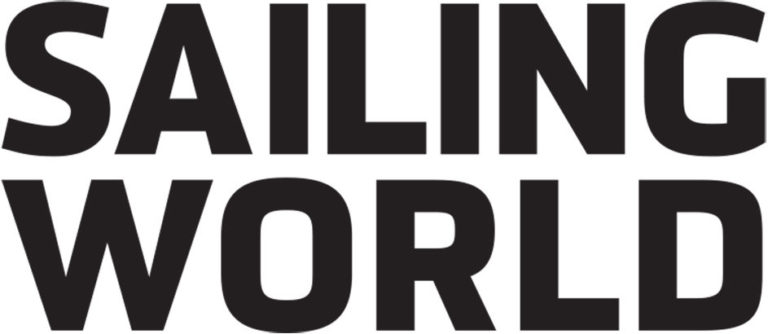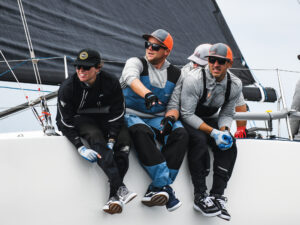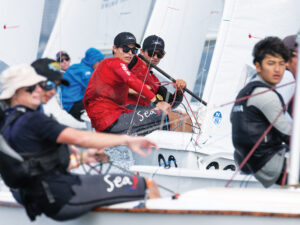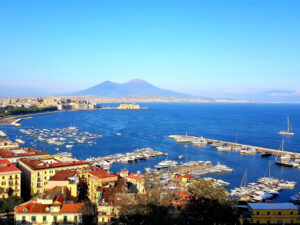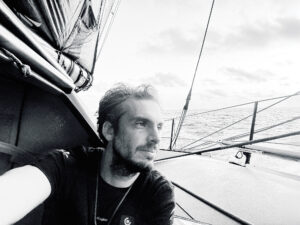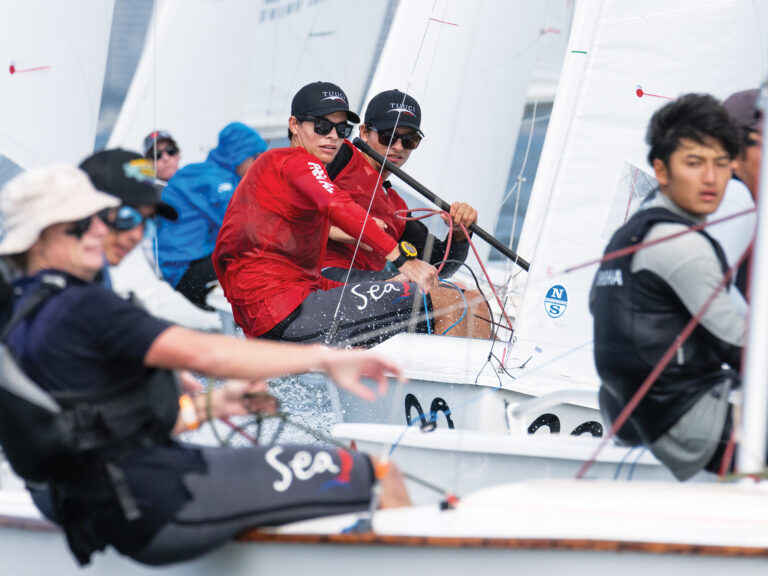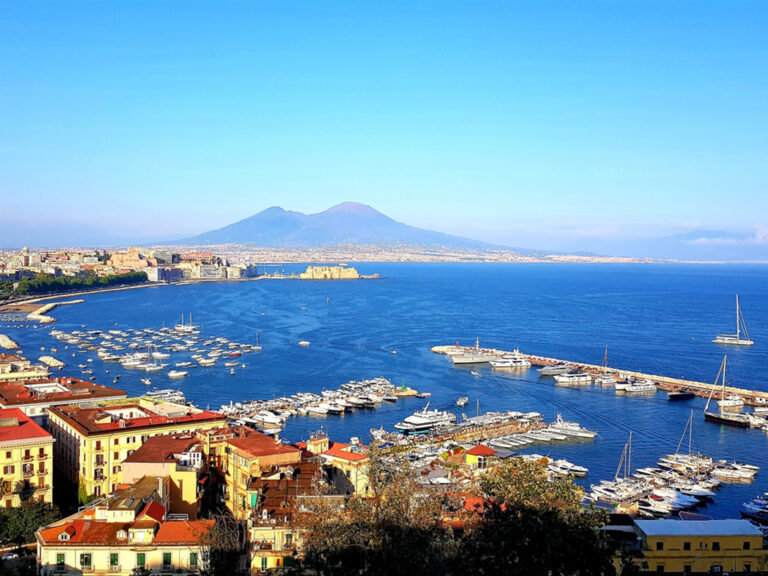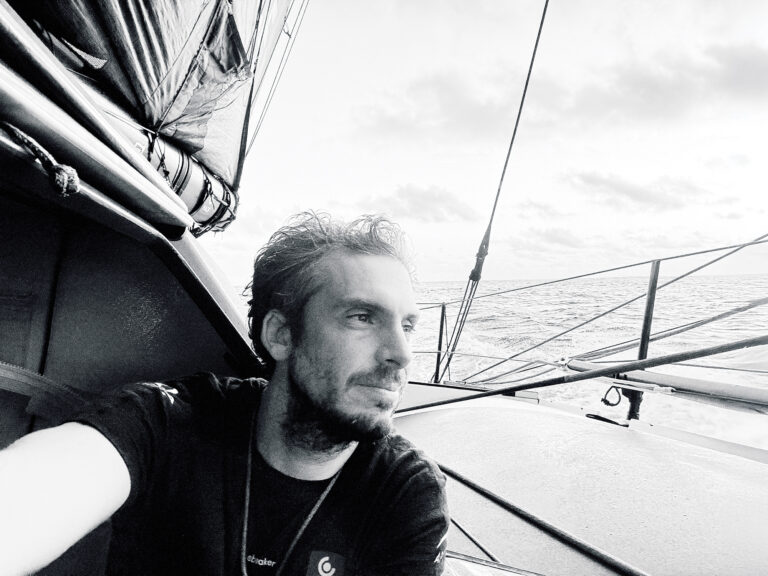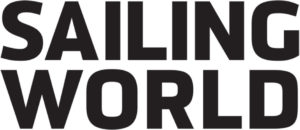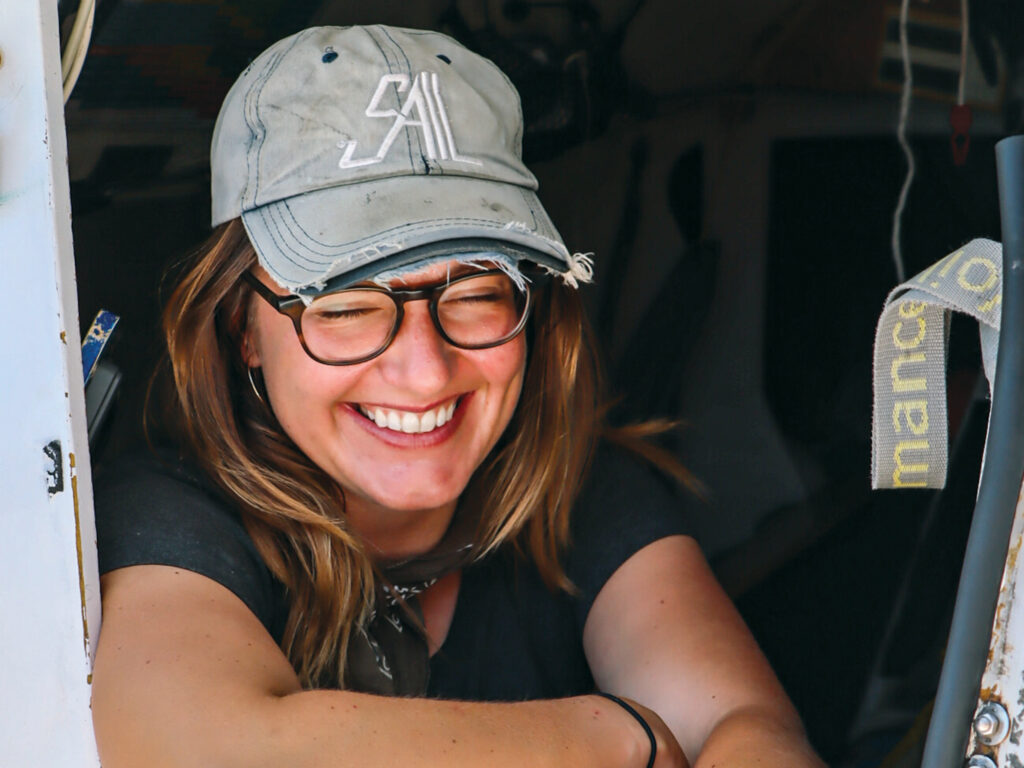
for most sailors, running aground and abandoning their vessel to the rocks, waves, and wind might be reason enough to pause ambitious plans to race singlehanded across the Atlantic aboard a caffeinated 21-footer. But Ambre Hasson isn’t most sailors.
While Hasson didn’t grow up sailing, didn’t race in college, and didn’t take to the sport until she was 27, the Franco-American caught the sailing bug during the pandemic. In 2020, she traded her tech startup job in New York City for a prototype Classe Mini in Lorient, France. Hasson isn’t reliant upon a trust fund or sitting on IPO trappings. Instead, she’s fueling her campaign by working on other people’s boats; soliciting sponsorship, donations, and generosity; and keeping her overhead low.
Along the way, she’s racked up 15,000 nautical miles and some encouraging results, including a second-place finish in the Mini Transmanche 2024.
Hasson was born in Paris in March 1993, but her family left France when she was 7 to travel. Three years later, they settled in Charlottesville, Virginia, where Hasson would eventually earn her BA in economics from the University of Virginia before moving to Brooklyn, New York.
While Hasson loved her Big Apple experience and “followed the rhythms of the city,” this changed with 2020’s COVID lockdowns. “I was losing my mind,” she says, explaining that she flew to Florida and was working remotely when she decided to buy a sailboat. “I have no idea where the idea came from,” she says. While she had sailed “once or twice” as a kid with her grandfather, she had no experience. So she started volunteering at a sailing school in exchange for lessons, and she began perusing Craigslist.
This led her to an abandoned Newport 29.
Hasson joined the Great Resignation and spent the next two years living aboard and learning to sail. She also followed the 2020-21 Vendée Globe and began absorbing information about IMOCA 60s, Class 40s, and Classe Minis. “A seed was planted and began growing,” she says.
Shoots emerged in 2022. Hasson, who is bilingual, was traveling around France for the summer and experienced the Mini world firsthand. “There were all kinds of people,” she says. Some of those she met had sailed all their lives and had amassed serious miles, while others were just going for it.
“So I decided to buy a Mini,” she says.
That’s when she found No. 138, a 1995 Pierre Rolland-designed prototype, which she purchased—layaway-style—for about $24,000, with the dream of sailing the Mini Transat 2023.
This gave her about six months to get the boat sorted and sail the race’s prerequisite miles. The Classe Mini’s racing season began in April. Hasson started seven events but finished only four. “I was starting to see a pattern,” she says.
Still, there were bright spots, including a second-place finish in the doublehanded Gran Premio D’Italia, but her reality was that she was sailing an old boat on a thin budget, with limited time to complete her 1,000-nautical-mile solo qualifier before the event’s July deadline.
Hasson burned this fuse to the final 12 days, forcing her to accept a suboptimal weather window that required skirting four major depressions and sailing upwind in 35 knots. “I was on the edge of control,” Hasson says, describing sailing at 13 to 14 knots with a double-reefed mainsail and solent, once she was finally able to bear away.
But she made it to Port Bourgenay, where she called for a tow to help her negotiate the port’s tricky entrance.
That’s when things went pear-shaped.
“It was surfing weather, not sailing weather,” she says, explaining that while the channel is deep, shallows lurk outside the buoys. An inflatable was dispatched to help her, but it was struggling in the conditions.
“I kept going under my jib,” she says. “I had a bad feeling.”
A breaking wave caught the boat’s port quarter, pushing it outside the channel. Hasson’s keel found the bricks, and the ensuing compression loading from the seas turned her keel into an instrument of destruction. Seawater began flooding the bilge.
“There’s always a solution at sea,” she says, “but I realized that there was nothing I could do.”
Hasson grabbed her essentials, jumped overboard, and swam—then crawled—onto the beach. Worse, a peanut gallery had assembled atop the seawall.
“There was a lot of rage,” she says of the experience.
While her inclination was to repair her baby, she was told that it would cost anywhere from $62,000 to $83,000 to fix her $24,000 boat. She didn’t need her UVA degree to compute this cost-benefit analysis.
“The months that followed were very hard,” she says, explaining that she had put everything she had into the boat and her Mini Transat dream. Worse, she says, detailing a conversation with her mother, was her anxiety that without a boat, she couldn’t sail.
So she did the logical thing.
“I wanted a boat that was beautiful, one that I could picture myself on,” she says. “I didn’t want a scow.”
She found No. 618 in Finland and agreed to buy it.
The catch? Her insurance company hadn’t paid her claim, and she didn’t have the money. Fortunately, circumstance began intervening. As an example, she describes an impromptu dinner with a friend and his deep-pocketed buddies. She walked away with a $10,400 donation, which she used to secure her second Mini in late 2023.

Hasson was back in the game, but No. 618—a 2006 prototype Finot-Conq named On the Road Again II—was far more complex than her previous Mini; this one came with a canting keel, rotating mast, lifting rudders, daggerboards, and water-ballasting tanks. “It’s an IMOCA, just one-third the size,” she says.
Hasson spent 2024 training with a group of Mini sailors. “They were serious and had more experience,” she says of her first few months. “I was never able to keep up with the group—it was demoralizing, and I lost confidence.” The only thing that kept her going, she says, was a breakthrough moment when she found her “positive anger” and completed a tack inside of 3 minutes. This allowed her to finally keep pace.
More importantly, her confidence returned. “I discovered how to sail the boat solo under spinnaker,” she says, describing a race where she passed 20 boats overnight.
In total, Hasson started and finished four races in 2024: the Mini Transmanche, the Mini Fastnet, the Mini en Mai and the Plastimo Lorient Mini. She also dispatched her 1,000-nautical-mile solo qualifier. En route, she clocked 18.1 knots of boatspeed, learned to use her autopilot, and got comfortable pushing the “friction point” of control. “I’m not scientific,” she says, explaining that she relies on feel to know when the boat is balanced.
Like all sailors, Hasson has her weakness. Weather is one. The Mini Transat fleet uses single-sideband radios, not satellite communication systems, to access “broad” weather reports. While skippers generally know where the lows and highs lurk, their low-resolution information means they’re essentially dead-reckoning their weather routing.
Enter sailing’s ancient arts. “I’m learning how weather works,” Hasson says, explaining that this includes studying clouds for meteorological telltales.
While the Mini Transat 2025’s September start is looming, Hasson envisions less racing this season. “It’s important to start the Mini Transat fresh,” she says. “I’ll do two, maybe three races.”
That said, Hasson envisions ample on-the-water time. “I want to cross that finish line knowing that I gave it everything and seized every opportunity,” she says.
When asked about her postrace plans, Hasson says that she can’t see herself returning to the startup world. “Sailing is a bit of an addiction, but to get the same high, you need more drug,” she says, adding that she’s sailed aboard Class 40s and Figaro boats. “It’s impressive how much more power they have. It’s a bit intoxicating.”
